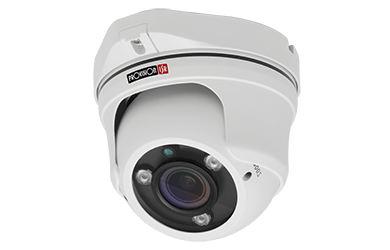
When we think of the notion of ‘home’ it brings forth a sense of nurture, protection and joy. Yet, it is also a prime environment for accidents and injuries to occur, particularly for children.
1. Baby Monitors and / or CCTV Cameras
Infants are particularly vulnerable as they rely completely on their parents and caregivers for all necessities in this early stage of life. Safety is the utmost importance for all families and often installing baby monitors or CCTV cameras can offer valuable support as modern technology means you can track audio, video and in some cases even your babies breathing.
2. Safety Locks, Latches and Plugs
Keep little hands from exploring areas out of bound by securing your cupboards, doors and drawers with adequate latches and locks. Electrical outlets can easily be secured with plugs as well. These simple measures can make the world of difference to little explorers.
3. Yard Security and Driveways
Outdoor environments are an integral part of Australian children’s lives. To make sure you have minimized all risks, make sure you have adequate fencing and locked gates, in particular bodies of water on your property should be at the top of your list.
Having a clear driveway at all times aids visibility for the driver and family members. Millennium Security offer home automation systems that provide you with flexibility from a distance to control your lights, irrigation systems, roller doors, security systems and any electrical appliances you can think of. So, although you may be the first one home after a long day of work, you can make your home warm for your children in advance, light the driveway up for clear visibility and water the garden with just a press of a button! You can find out more information about our home automation services here.
4. Stairs, Balconies and Heights
Falling is probably one of the first things that come to mind in regards to safety at home for children and with good reason - “40% of fatal falls, among children under 15 years of age in Australia, were from heights less than 3 feet (91.44cm)” Culvenor, Dr J. (2002) Design of Childproof Barriers to Prevent Falls from a Height in Public Places. Annual International Occupational Ergonomics and Safety Conference.
Here are a few tips to keep in mind:
- “Make sure that your balcony or stair balustrade (railing) is at least 1m high and that vertical bars are no more than 12.5cm apart (use a ruler to measure the gaps between your vertical balustrade posts).
- Your balustrade should have no horizontal or near horizontal parts that would allow children to climb.
- All furniture, pot plants and other climbable objects should be kept away from the edge of balconies.
- Be aware of furniture that is light enough for children to drag to the balcony edge.
- Check balustrades regularly to ensure that they are in good condition.
- Supervise your children while they are on the balcony.
- Keep doors leading to balconies locked so that children cannot gain access to them.
- Do not allow children to play on stairs.
- Install stair gates at the top and bottom of stairs to prevent young children from gaining access to them.”
Kids Health, NSW
Also, be mindful of windows that may pose any safety issues - from mitigating risk of falling or unsafe latches that can easily injure fingers. Check locks and safety screens regularly and supervise children at all times when windows without screens are open.
5. Flat Screen Entertainment Systems
Flat screens look fantastic and are a terrific appliance for bringing the entire family together for movie nights. But they can also provide a hazard if not secured properly. In the USA the number of children injured by televisions falling on them dramatically increased when flat screen TV's became common place. In fact, statistics from the USA has shown that between 1990 and 2011, 17,000 children under the age of 18 had been treated for TV related injuries in emergency rooms across America, at a rate of one injury every 30 minutes (www.today.com c.2013)). It also resulted in the death of hundreds of children. The main reason for this is flat screen televisions can tip over easily. They are also incredibly heavy, especially for smaller children, with children under the age of 5 being particularly vulnerable. Consider having the screens securely mounted on the wall. If this is not possible, then make sure the screens have adequate weight distribution and sealed to cabinets where active young bodies and curious hands can’t topple the screens over and cause injury.

6. Blinds, Beds and Safe Sleeping Practices
Bunk Beds are best left until children are over the age of 6. Keep in mind that “falls represent over 75 per cent of injury incidents that occur with bunks or elevated beds. Children under six account for more than 50 per cent of the total injuries with these products”.
Injuries beyond falling can also occur, limbs, hands, or heads can become trapped in between the bed structures and the possibility of accidental hanging from clothing or bedding can also occur. Not quite the good night rest you were hoping for! If you do have bunk beds or considering making or installing one, make sure there are safety rails on the sides and ends. Do not place bassinets or baby cribs close to windows with dangling cords or curtains; according to The Australian Competition and Consumer Commission 2013, it is also best practice to remove all bedding that has ties or straps to prevent strangulation or suffocation.
7. Medicines
Young children learn and develop through exploration. Medicines however are not something that should be played with! Keep these items safely placed in high out of reach places such as sealed containers at the back of a top shelf or preferably a locked medicine cabinet. Never leave medicines lying around unattended.
8. Chemicals and Hazardous Materials
Make sure you always have on hand Material Data Safety Sheets for all dangerous products kept in the home or garage. These important information sheets come with the products or can usually be downloadable from the company’s website. This information will provide vital information if any product has been accidentally drunk or come into contact with the skin, eyes or inhaled. Also, make sure all chemicals and hazardous materials are safely secured in out of reach places. Keep your garage or garden shed securely locked from little fingers ready to explore.
9. Small Objects and Toy Safety
Small objects - approximately 32mm in diameter– can pose as a choke hazard to infants and toddlers. Always follow the age suggestion on toys introduced to your young children and make sure all batteries are securely locked from clever little fingers. The Australian Competition and Consumer Commission has developed Product Safety, a website and knowedge base with terrific information regarding product safety for children and toddlers. Check out their free downloadable PDF document Keeping Baby Safe.
10. Education
Keep yourself and your family up to date with potential environmental hazards and hazard management. Regularly check products and ensure all broken toys are removed or mended. Keep a good quality first aid kit in your home and learn first aid. Also, teach your children at their appropriate development about safety. Have you ever conducted a household fire drill? What to do and who to call in case of an emergency? Educated decisions can assist in preventing injury and death. Call 000 in case of any immediate emergency within Australia.






